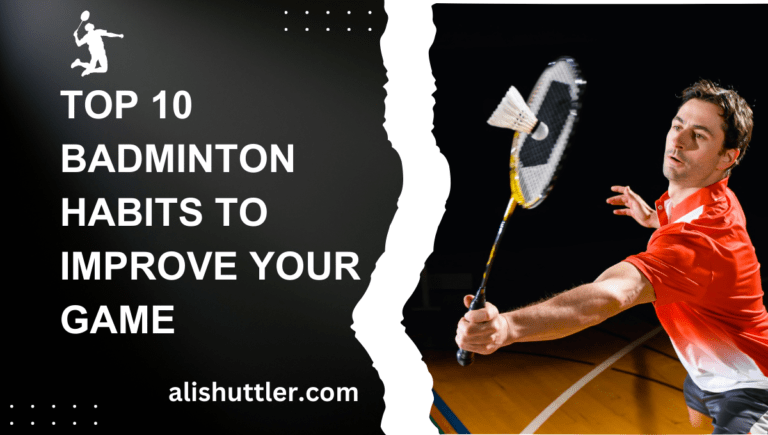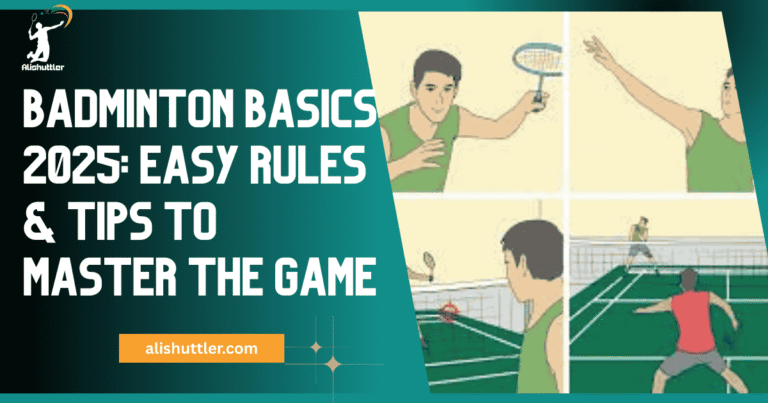$8,000-$65,000, depending on size, site prep and material selections. Indoor courts with wood or synthetic floors are more expensive than outdoor acrylic over concrete.
Lighting, drainage, fencing, and line marking all add to the bill. Land grading and base layers are what drive groundwork. How Much It Cost to Build a Badminton Court?
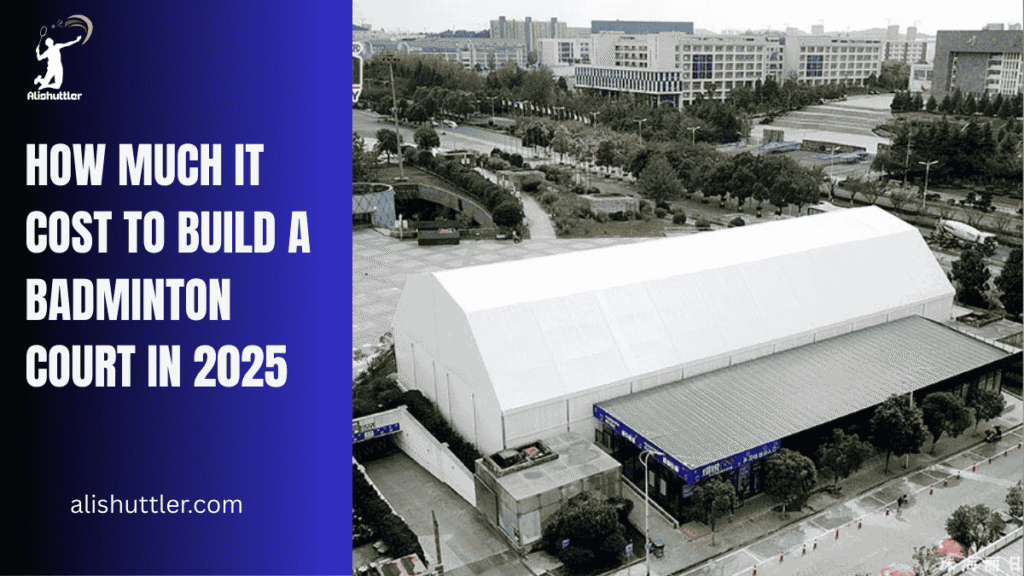
To plan ahead, understand court dimensions, flooring options, and local labor costs. The following sections detail each expense item with specific ranges and examples.
The Price Tag
Prices depend on location, construction and level of play. Indoor construction tends to run higher because of structures, HVAC and lighting. Surface type, base prep and amenities shift totals than more than most anticipate. Count on both construct and maintenance – flooring and lighting require care through the years.
A Quick Answer
Per standard court, indoor projects typically come in the range of $25,350 – $50,700, with outdoor builds ranging from $8,450 – $16,900. A few sources cite an indoor install as low as $5,000 to $20,000 for extremely minimal work, but actual facilities skew higher. Average indoor pricing is about $15–30 per square foot.
A simple 6,000–7,000 square meter facility equivalent is unusual for one court, but large shells at $15 to $60 per square foot can easily push tallies to $90,000–$420,000. Anticipate artificial underfoot to span from bargain roll-out covers to poured PU – typically middle of the road in cost and upkeep.
Wood systems are more expensive initially and require refinishing every so often at $2 to $5 per square foot. Modular tiles fall in between, with fast installation and easy changes, and they fit multi-purpose halls. Court markings are minuscule by comparison, about $338 to $845.
Lighting, fencing and seating transform the price quickly. Indoor light arrays and controls can compete with floors for costs. Outdoor fencing comes in at about $1,690 to $5,070, and seating (benches or small bleachers) contributes an additional $845 to $3,380. Permits differ per region, but a typical range is $169 to $845.
As a snapshot tool, create a table with indoor/outdoor rows, surface columns (synthetic, wood, modular), and add-ons for lights, HVAC and seating.
The Cost Spectrum
Low-end builds focus on playability with minimal extras: outdoor slab, simple acrylic or modular surface, basic lights or none. This can provide some “leveling the playing field” fundamentals coming in around $18,572 to $41,539. Mid-tier projects, such as those typical for clubs and schools, add resilient indoor surfaces, lighting, and code-compliant lines, often $25,000-$60,000 per court.
Top of the line facilities with sprung wood, professional lighting and climate control reach $47,100–$98,595 per court or higher. DIY work can reduce labor costs on outdoor pads and modular tiles, but errors in base prep or moisture control cause rework.
Pros cost more initially but provide flatness, drainage and warranties to protect your floor. Add-ons increase totals in a stair-step manner. Climate control is a huge driver inside, both install and operating.
Sprung wood floors are more expensive to purchase and maintain, schedule refinishing cycles. Multi-court complexes and commercial venues scale costs faster than linearly, due to building shells, higher spec MEP systems, lighting grids and spectator needs.
Detailed Cost Breakdown
Costs pile up in phases. So use a line-item worksheet from land checks to final gear. Compare material, labor, and permits side-by-side to identify savings without compromising safety or play value.
1. Site Preparation
Land clearing, grading and leveling put your base down. For a 13.4 m × 6.1 m court + run-off – about an 18 m × 10 m pad, plan for some earthworks and compaction – anything from several hundred to a few thousand dollars depending on soil and access. Bad access or rock raises man-hour.
Drainage counts outside. French drains, swales or perforated pipes contribute materials and trenching. Budget low for light runoff and higher where rainfall is heavy or clay soils retain water.
Add soil testing and a site survey to validate bearing and layout – those inoculate against settlement and layout mistakes. If you have to pull out old slabs, trees, or sod, factor in demolition, hauling and disposal fees, which can differ drastically by area and by tonnage.
2. Foundation
A stiff base — concrete or asphalt — supports the system. Cost according to size and thickness – most outdoor pads have 100–125 mm concrete on compacted subbase, though asphalt thickness may depend on climate and load. With concrete, form factors, rebar/mesh, and control joints.
When it comes to indoor builds, having a flat, dry subfloor is critical prior to the installation of wood or synthetic. Moisture barrier, leveling compound and vapor checks reduce future flops. Stronger bases translate to more secure and safe stops, less cracking, and longer surface longevity thus minimizing life-cycle How Much It Cost to Build a Badminton Court.
3. Flooring System
Material cost per m2 defines budget and feel. Wood is approximately $10.14–$20.28 per square foot, synthetic mats $6.76–$13.52 and finished concrete or acrylic systems around $3.38–$6.76 per square foot. Wood offers maximum shock and ball response, synthetic is most durable and easiest to clean, acrylic over concrete is most economical but more rigid.
Installation shifts total. Permanent wood sports floors require sleepers and sanding. Synthetic roll-outs are put in more quickly. Modular tiles click in and can move locations. For events, temporary mats are cheaper to install but require storage. Verify lines, slip rating and rebound comply with official standards if you hold matches.
4. Court Structure
Indoor shells consist of walls, roofing, and HVAC. Air domes include blowers and anchoring. How Much It Cost to Build a Badminton Court varies with span and local codes. Outdoor locations could require fencing for ball containment, net posts, anchors, and boundary paint or tape $338–$845.
Steel frames or prefab steel buildings may abbreviate timelines but require slab, insulation and corrosion control. Robust anchors resist wind, rain and sun, which saves your floor and reduces replacements.
5. Lighting
Indoor or night play requires even light. Standard rec sets require less fixtures; competition requires higher lux and uniformity. LEDs at $254–507 each; halogen $169–338, but LEDs slash power and heat and dominate on long-term bills and upkeep.
Contrast upfront price, lumen output, beam angles and energy use to right-size both cost and quality.
6. Essential Equipment
A net and pole system costs $254–$845. Court markings add $338–$845, with paint longer lasting than tape. Include post sleeves, edge tools, and floor protection. Optional items: referee chair, small scoreboard, storage racks streamline operations and user flow for How Much It Cost to Build a Badminton Court.
Rackets, grips, and strings on a racquet; service on a bike — yearly maintenance runs close to $1,000–$2,000.
Permits and totals: zoning $260–$1,300, building $650–$2,600, legal $1,300–$3,900. Indoor setup elements can run $5,000–$20,000, while full indoor builds often range $25,350–$50,700, with outdoor courts about $8,450–$16,900.
All-in openings generate approximately $18,572–$41,539 for standard locations and $47,100–$98,595 for premium locations. Use a detailed cost breakdown to trim scope or switch materials where it won’t harm safety.
Major Cost Variables
Costs vary depending on court type, size, materials, site conditions, labor, and how competitive you aim to get. Indoor vs. Outdoor, flooring systems, and location comprise most of the budget-driving cost decisions! How Much It Cost to Build a Badminton Court count counts A full court (13.4 m by 6.1 m; 44 ft by 20 ft) costs less per unit than a multi-court build, while a compact layout (11 m by 5.5 m; 36 ft by 18 ft) trims line items but alters play.
Indoor vs. Outdoor How Much It Cost to Build a Badminton Court
Indoor courts generally are more expensive initially because the shell contributes roof, structure, insulation and services. Prepare for elevated spends for HVAC, lighting, acoustic control and wall protection. Most indoor builds hover in the $5,000–$20,000 range for a single court if you have an existing building, but a new dedicated hall can easily push well beyond that due to envelope and MEP systems.
Outdoor courts reduce construction expenses, but require a sturdy foundation and weatherproof coatings. The foundation, usually 100–150 mm (4–6 inches) of compacted gravel, establishes drainage and lifespan. Outdoor projects for schools, clubs or parks typically land somewhere in the range of $15,000-$110,000, based on site prep, fencing and lights.
Climate changes the math. Hot or humid areas favor UV-stable, non-slip coatings and corrosion-resistant hardware. Freeze–thaw zones may need thicker bases and crack control. Over the years, resurfacing an outdoor court can cost $3,000–$8,000, and more, if your subbase fails How Much It Cost to Build a Badminton Court.
Flooring Material
Wood, synthetic poured systems, and modular tiles all cost and behave differently. Wood (maple) sounds springy, but requires climate control and maintenance. Poured polyurethane sport floors offer uniform bounce, healthy traction and less maintenance than wood in fluctuating climates.
Modular multi-purpose sport tiles mount quickly, resist water, and permit localized patching, but certain tiles are a bit harder on the soles. All-weather acrylic surfacing, popular outdoors, strikes a middle ground between grip and durability at a moderate price. For elite competitions, wood or top-quality synthetic over a sprung underlay is usual.
Recreational sites prefer modular tiles or acrylic for toughness and easier clean up. Justify upfront spend with lifetime costs. Annual maintenance can run $1,000–$5,000 depending on use, cleaning, and re-coating cycles. A smart balance is a tough synthetic or premium tile on a solid subfloor to prevent premature refinishing.
Geographic Location
Labor rates differ drastically by location, and can eek out totals more than material selection. In dense cities, permits, inspections, and utility tie-ins often cost more, and land prep may entail demolition or grading. It might be less expensive in markets with local suppliers, but remote areas are hit with shipping charges, particularly for rolls of specialty floorings or modular tiles, or shock pads for How Much It Cost to Build a Badminton Court.
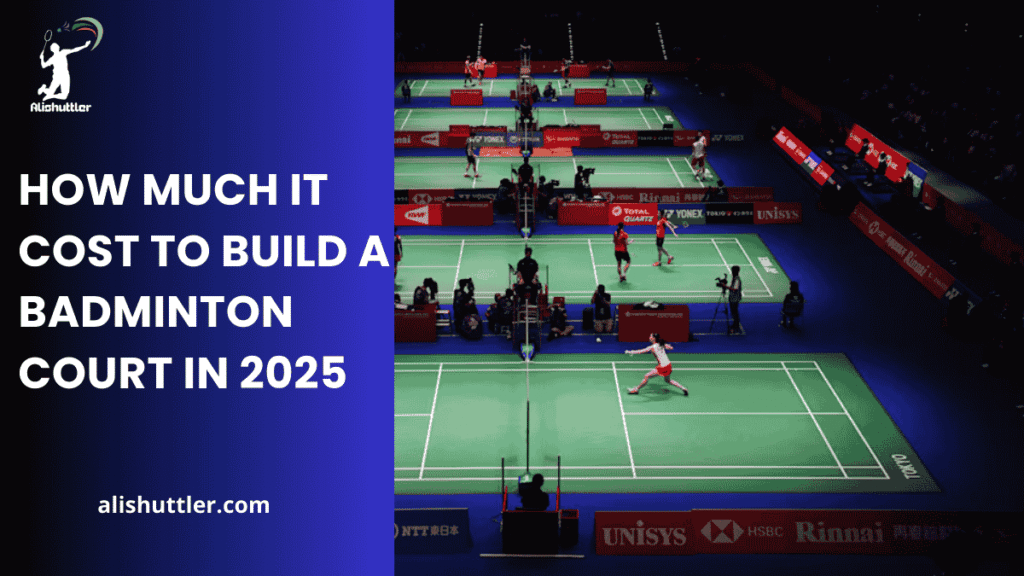
Local weather drives spec changes: marine air needs anti-corrosion hardware; desert climates call for UV-stable coatings; monsoon regions benefit from robust drainage and moisture barriers. These tweaks tack on line items but shield the asset.
Depending on builds, a quality court could cost anywhere between ₹5 – 15 lakhs ($6,700 – $20,000). Scope, finishes and court count can push the number up. Design your plan around base integrity first a lousy subgrade is going to multiply your costs later.
The Hidden Costs
Hidden costs manifest across planning, build and operation. They arise from local ordinances, lot restrictions, and persistent demands that too many owners underestimate. Size, configuration, materials, labor, and extras such as lights or seating all push the ultimate cost, so budgets need to allow for fluctuation.
Long-Term Upkeep
Yearly care isn’t optional. Budget $1,000–$5,000 a year, depending on usage, climate, and whether your court is indoor or outdoor. Line-markings create recurrent spend as well as indoor paint can fade under bright lights and consistent play, and touch-ups tend to coincide with planned cleaning. How Much It Cost to Build a Badminton Court.
Routine checkups detect minor problems when they’re still minor. Inspect flooring seams, subfloor moisture, net posts, anchors, wall padding and lighting mounts. A quarterly checklist cuts downtime and steers clear of more expensive repair bills!
Flooring selection establishes your maintenance hill. Wood plays well but requires an annual recoat, plus a full sand and refinish roughly every 10 years. PU or vinyl surfaces require seams and topcoat. Modular tiles are moisture-resistant, but they can rattle and require clip replacements. Both routes alter workdays and supply chains.
Weather and wear and tear deliver unexpected patches. Indoor HVAC leaks can warp boards, outdoor drains can clog and undermine base layers. Maintain a small buffer to absorb these hits without rescheduling appointments How Much It Cost to Build a Badminton Court.
Permits and Regulations
Assume permit fees for site work, structural work, electrical and signage. Indoor builds frequently require separate lighting arrays & fire systems permits. Prices differ based on location and project scale.
Codes direct exits, ceiling height, slip resistance and guardrails. Safety codes address lighting glare, wiring and emergency lighting. Noncompliance risks and thus delays and rework cost more than upfront checks.
Zoning can govern setbacks, roof height, parking quantity and noise mitigation. It can restrict siting or necessitate sound mitigation if proximate to residences. Early planning around these limits sidesteps redesign How Much It Cost to Build a Badminton Court.
Budget for inspections and certifications before play: electrical sign-offs, occupancy certificates, and fire approvals. Other areas require accessibility audits and indoor air testing.
Utility Bills: How Much It Cost to Build a Badminton Court
Indoor courts consume consistent energy. One court’s lighting can run several hundred watts to multiple kilowatts depending on lux targets–over a year, energy use adds up, especially with long operating hours. Heating and ventilation tack on more, with spikes in the cold or humid seasons.
Outdoor courts still utilize water for washing, dust control and any nearby landscaping. Bad drainage increases maintenance expenses and reduces covering lifespan.
Efficient LED luminaires, smart controls, and right-sized HVAC reduce long-term bills. Higher upfront prices frequently pay back in lower monthly fees.
Add meter installs, service connection fees and deposits to your upfront budget. These may be material and by utility and geography.
Labor rates vary by location. Intricate designs, additional seating or pro-grade lights add to both build and operating costs. The kind of materials and line-marking specs scale both initial and ongoing expenditure.
Smart Savings
Expenses accumulate quickly, so budget the absolute necessities and then tack on the desirables. A basic court can cost $18,572–$41,539, whereas high-end constructions go as high as $47,100–$98,595. Keep the heart—playable surface, safe sub-base, accurate lines and permits—front and center. Anticipate $1,000–$2,000 annually for maintenance.
Material Selection How Much It Cost to Build a Badminton Court
Surface selection dictates price point and texture. Concrete is the least expensive base at $3.38–$6.76 per sq ft, but it’s tough on joints unless covered. Synthetic mat provides better shock absorption at $6.76–$13.52 per sq ft and installs more quickly. Wood sounds luxurious and performs beautifully but runs $10.14–$20.28 per square foot and requires climate control.
For a typical 13.4 m × 6.1 m court (44 ft × 20 ft), multiply these rates by total surfaced area add run off space if you have seating or walkways. More initial investment in quality flooring can reduce damage control in the long-term, increase player safety and have resale value if you ever host events. Cheap finishes wear faster, increase upkeep, and can lead to injury.
Find sources near the site to avoid shipping premiums and delays. Request contractor packs or overstocks from local suppliers. Group buys with local clubs can bring down per-unit prices on mats or timber, or coatings for How Much It Cost to Build a Badminton Court.
Price-to-lifespan snapshot:
- Concrete finish: $3.38–$6.76/sq ft | 15–30 years (with sealing)
- Synthetic mat: $6.76–$13.52/sq ft | 5–10 years (replaceable top)
- Wood (maple): $10.14–$20.28/sq ft | 20–40 years (with care)
Court lines are mandatory; budget $338–$845 for markings.
Phased Construction
Stage the build to match cash flow: start with a leveled base, playable surface, net posts, and accurate lines. Lock down permits early–zoning $260–$1,300, construction $650–$2,600–to prevent rework.
Add later: LED lighting, spectator seating, storage, acoustic panels, or extra courts. LED fixtures $254–$507 each, eight total $2,028–$4,056. Halogen is less expensive initially at $169-$338 apiece (eight for $1,352-$2,704) but consumes more electricity and requires more replacements.
Basic start means quicker to open and earlier income or utilization. Document a phased roadmap with timelines, dependencies, and holdbacks so upgrades don’t disrupt play.
DIY Opportunities
Gifted owners can draw lines (trace official measurements), set up nets and posts, and hang wall padding. Light mini-jobs beat outsourcing manpower costs, no jeopardy.
For site prep, rent compactors or mixers by the day instead of full crews. This plays well when the sub-base is uncomplicated and soil is firm.
Don’t go DIY on structural engineering, sub-base for drainage, a flooring system that needs exact moisture control, or electrical work for lighting. Estimate savings before choosing DIY: list contractor quotes, subtract rental and materials, add your time cost, and include risk of rework.
Often times, pros for base and electrical, then DIY lines and equipment, strikes the optimum cost-performance balance.
Space Requirements
Space powers cost, safety and user experience. Design the footprint before you design the finishes, lighting and add‑ons.
Specify the minimum area needed for a regulation badminton court, including clearance zones.
A regulation playing surface requires the court with run‑off on all sides and overhead clearance. The outlined court measures approximately 13.4 m by 6.1 m (44 ft by 20 ft). For safe play, leave 1.5–2.0 m clear on the sides and 2.0–2.5 m beyond each baseline.
That increases the suggested floor space to about 16–17 m wide x 18–19 m long. In imperial, figure about 52-56′ x 60-62′. Clear height must be 7.0–9.0 m, in order to prevent shuttle interference. Shorter ceilings push darker corners and increase danger of injury.
Where local code or site restricts space, make the buffer symmetric so players have equal space. The typical on‑court space of the delineated court is approximately 150 m² (1,620 sq ft), but the overall space required increases with run‑off, net posts, umpire chair and walkways.
Provide exact badminton court dimensions for singles, doubles, and mini badminton setups.
Marked court dimensions:
- Full court: 13.40 m × 6.10 m (44 ft × 20 ft)
- Singles width: 5.18 m (17 ft) using inner side lines. Same height.
- Doubles width: 6.10 m (20 ft); same length, with shorter doubles service line
- Net height at center: 1.524 m. At posts: 1.55 m
Mini How Much It Cost to Build a Badminton Court (junior or small court training) depends on the program. Typical installations measure 9–12 m in length and 4–5 m in width, with a lower net (approximately 1.3–1.4 m).
If the court is smaller, scale length and width accordingly to maintain line geometry and service boxes. This maintains drills and scoring flow even on cramped sites.
Advise measuring available space to ensure compliance with official rules and safe play.
Start by confirming the internal clear box: length and width wall‑to‑wall, then the lowest obstruction height (beams, ducts, lights). Identify structural columns, doors, and emergency routes.
Verify slab flatness and drainage; the area should be graded and free of impediments so the foundation is solid, level and compacted prior to construction. Contrast your envelope to the play zone + clearances.
Put in spectator seating or storage or lounge, and it goes up. A simple, no‑frills hall with 1–4 courts typically comes in around 560–650 m² per court (6,000–7,000 sq ft) to accommodate run‑off, aisles and support space.
Suggest creating a layout diagram or table to visualize court placement and required clearances.
Sketch a scaled plan that shows: marked court lines, side and baseline buffers, post positions, umpire/referee spots, doors, benches, aisle widths, and lighting rows.
Add a section view for ceiling height/ luminaire hang points/ any ducts above net line. Experiment with different orientations to minimize glare and display uniform illumination.
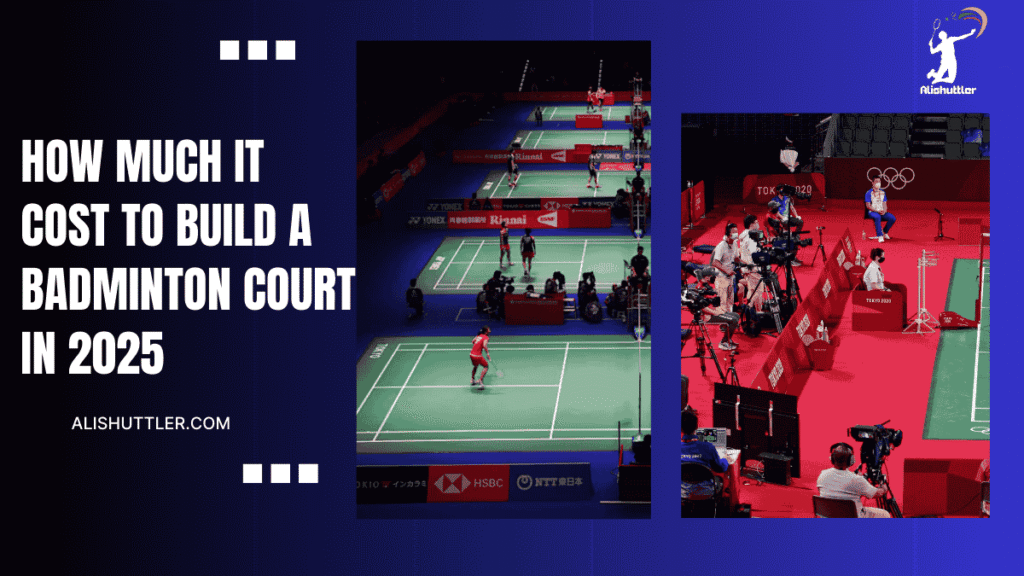
If adding amenities, block out space for seating, lockers, or café and record the increase in overall size. The overall space needed fluctuates with seating, lighting grids and other characteristics, therefore an overhead diagram assists cost options and steer clear of rework.
Final Thoughts on How Much It Cost to Build a Badminton Court
When you build a How Much It Cost to Build a Badminton Court, expenses pile up quickly, but every line item serves a specific purpose. Surface selection determines gameplay and maintenance. Lighting establishes vision and ease. Fencing, lines, and nets complete play requirements. Labor and site prep add real weight. Sneaky fees, such as permits, drainage, haul-off, and power runs, appear late. Smart buys and good timing reduce waste and minimize spend.
To begin fresh, outline your clean site, make list must-haves and put a hard cap. Obtain three quotes. Request itemized bids. For a rapid comparison, price out a 13.4 m by 6.1 m indoor court with LED lights and a PU floor, then interchange wood or asphalt.
Want a cost plan or vendor list? Tell me your location and scale.
Frequently Asked Questions
How Much It Cost to Build a Badminton Court?
Anticipate €10,000–€55,000 for a regular indoor court build. Outdoor courts can be less expensive, about €3,000–€20,000. Prices differ by surface, place, and labor. Premium indoor flooring and pro lighting drive the price up.
What is the detailed cost breakdown?
Typical ranges: flooring (€2,500–€20,000), sub-base/concrete (€1,500–€8,000), lighting (€800–€6,000), nets and posts (€150–€600), line marking (€100–€400), ventilation/HVAC (€1,500–€10,000), labor (€2,000–€12,000), permits/design (€300–€3,000).
What factors impact the total price the most?
Surface selection, site prep, indoor/outdoor construction, lighting, local labor costs. Structural requirements (roof height, insulation) and drainage for outdoor courts impact cost. Accessibility and material availability will vary pricing.
Are there hidden costs to watch for?
Yes. Soil stabilization, drainage repairs, electrical enhancements, debris removal, permits, insurance and warranty extensions. For indoor courts, HVAC balancing, acoustic treatment and moisture barriers can add surprise expenses.
How can I save money without hurting quality?
Opt for a durable mid-range surface (PVC or acrylic). Utilize LED lighting with smart controls. Streamline drainage early. Package materials from a single supplier. Construct during off-seasons. Design precise floor plans to prevent remodeling.
What space do I need for a standard court?
For singles play, leave at least 13.4 m x 6.1 m for the court plus 1.5–2 m run-off all around. For easy play, go for 18 m x 10 m overall. Indoor ceiling height should be 7.5–9 m.
Is DIY feasible, or should I hire professionals?
DIY for outdoor acrylic or modular tiles, if you have the construction skills. Indoor courts benefit from professional installation, including sub-base, flooring and lighting, to ensure safety, durability and warranty standards.


